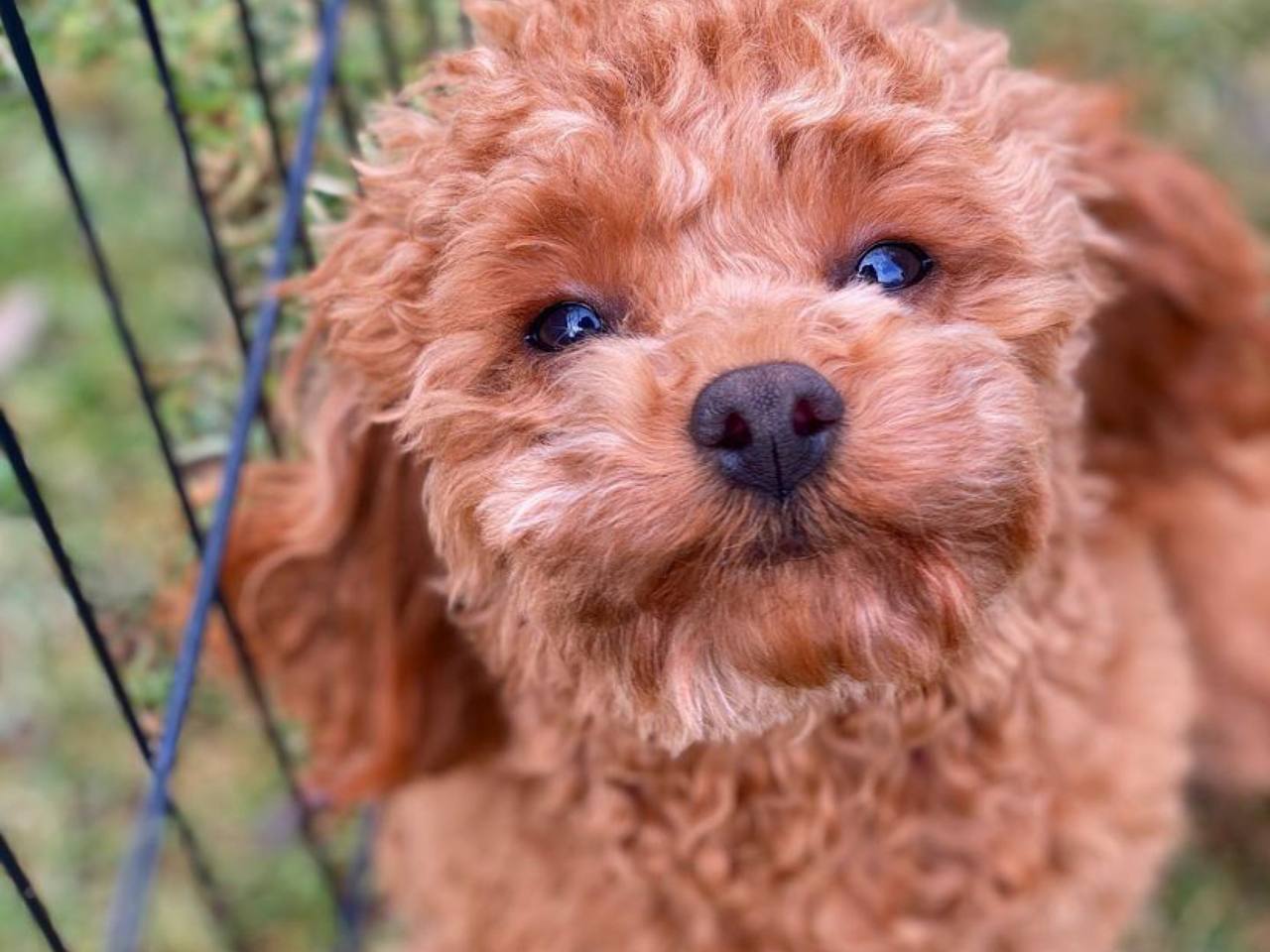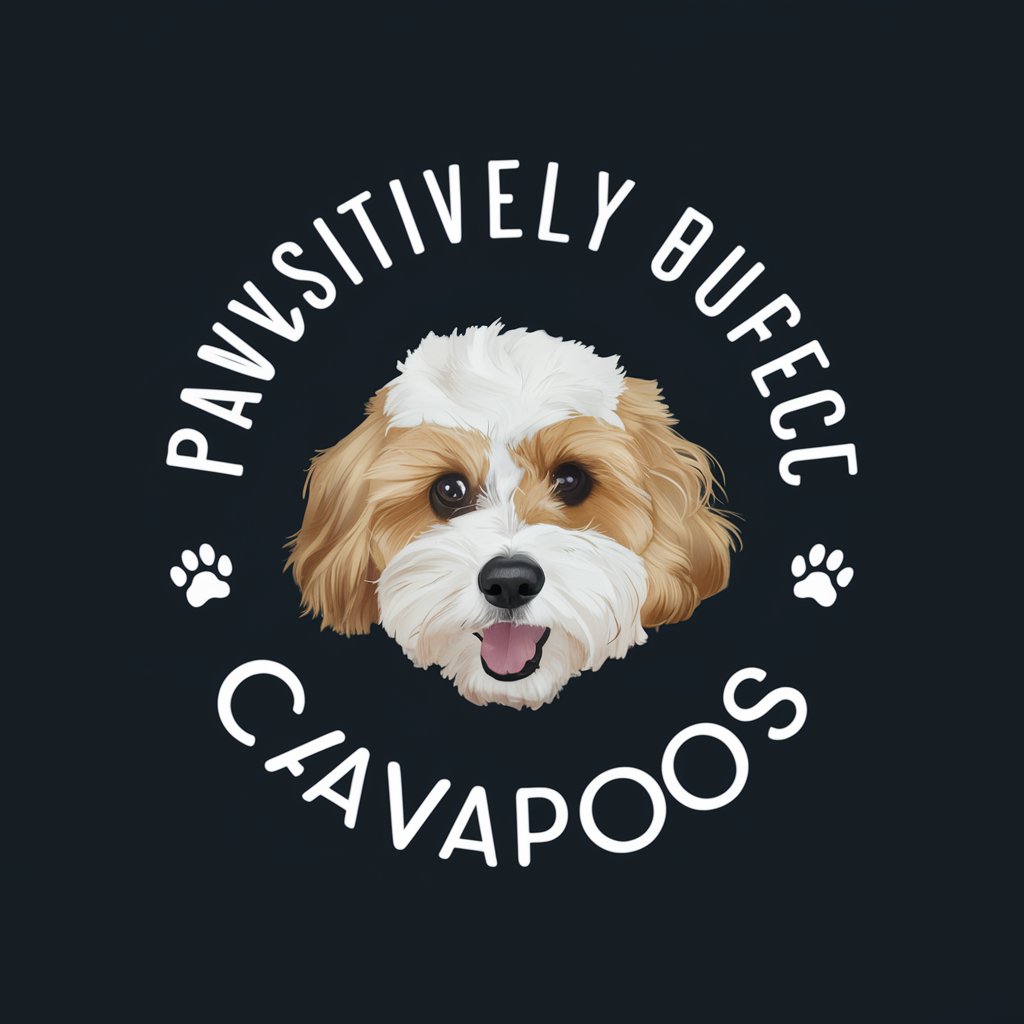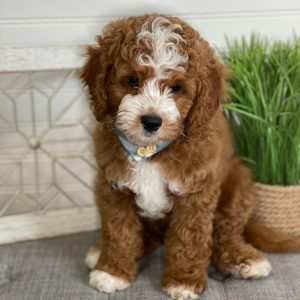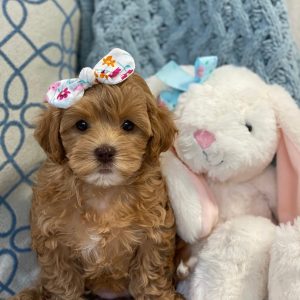How To Socialize a Cavapoo Puppy
Socializing a Cavapoo puppy is crucial for raising a well-adjusted, confident, and friendly dog. Early and positive exposure to a variety of people, animals, environments, and experiences will help your puppy grow into a well-behaved adult. Here’s a detailed guide on how to socialize your Cavapoo puppy:

The Importance of Socialization
- Building Confidence:
- Early socialization helps prevent fear and anxiety in unfamiliar situations.
- Confident puppies are less likely to develop behavioral issues like aggression or excessive barking.
- Promoting Positive Behavior:
- Well-socialized puppies are more likely to interact positively with other dogs and people.
- Socialization helps in preventing territorial or protective behaviors.
- Laying the Foundation for Training:
- Socialization makes future training easier by helping your puppy become more comfortable with new commands, environments, and situations.
Cavapoo Full Grown
Ideal Socialization Period
- Critical Period:
- The most critical period for socialization is between 3 and 14 weeks of age. This is when puppies are most receptive to new experiences.
- Even though socialization should continue throughout their life, experiences during this period have the most lasting impact.
Socialization Steps and Tips
1. Exposure to Different People
- Variety: Introduce your puppy to a wide variety of people, including men, women, children, and people of different ages, sizes, and ethnicities.
- Positive Interactions: Ensure that all interactions are positive. Allow people to offer treats or toys to create a positive association.
- Gentle Handling: Teach your puppy to be comfortable with gentle handling by different people, including touching their paws, ears, and tail.
2. Meeting Other Dogs and Animals
- Puppy Classes: Enroll your Cavapoo in a puppy socialization class where they can interact with other puppies in a controlled environment.
- Safe Playdates: Arrange playdates with friendly, vaccinated dogs that you know are gentle and well-behaved.
- Supervision: Always supervise interactions with other animals, especially larger dogs, to ensure your puppy isn’t overwhelmed or frightened.
- Exposure to Other Animals: If possible, introduce your puppy to other animals like cats or small pets to help them become accustomed to different species.
3. Introduction to Various Environments
- Different Surfaces: Expose your puppy to various surfaces such as grass, pavement, carpet, tile, and gravel to help them become comfortable walking on different textures.
- New Environments: Take your puppy to different places like parks, busy streets, pet-friendly stores, and friends’ homes to expose them to various sights, sounds, and smells.
- Car Rides: Take your puppy on short car rides to get them used to traveling. Gradually increase the length of the rides as they become more comfortable.
- Public Places: Visit pet-friendly public places where your puppy can observe and interact with new people and dogs.
4. Handling Everyday Noises
- Household Noises: Introduce your puppy to common household noises like the vacuum cleaner, hairdryer, washing machine, and doorbell. Start at a low volume and gradually increase it as they become more comfortable.
- Outdoor Noises: Expose your puppy to outdoor sounds such as traffic, construction, and other city noises while keeping them at a distance initially. Reward calm behavior.
- Thunderstorms and Fireworks: If possible, use recordings of thunderstorms or fireworks at a low volume to gradually acclimate your puppy to these sounds.
5. Positive Reinforcement
- Rewards: Use treats, praise, and toys to reward your puppy for calm and positive behavior in new situations.
- Calm and Patient Approach: Stay calm and patient during socialization. If your puppy seems scared or overwhelmed, take a step back and give them time to adjust.
- Short Sessions: Keep socialization sessions short and positive. End each session on a high note before your puppy becomes tired or stressed.
6. Desensitization to Common Scenarios
- Veterinary Visits: Make trips to the vet a positive experience by offering treats and praise during the visit. Consider making “fun visits” to the vet where no procedures are done, just a quick visit for a treat.
- Grooming: Get your puppy used to grooming early by gently brushing their coat, touching their paws, and handling their ears and mouth. Introduce them to the sounds and sensations of grooming tools like clippers or dryers.
- Collars and Leashes: Introduce your puppy to wearing a collar and leash early on. Let them wear it around the house before starting leash training.
7. Managing Fear and Anxiety
- Avoid Overwhelming Situations: If your puppy shows signs of fear or anxiety (cowering, trembling, barking), remove them from the situation and try again later with a more gradual approach.
- Gradual Exposure: Gradually increase the intensity of new experiences to avoid overwhelming your puppy. For example, start with a quiet park before moving to a busy one.
- Comfort and Support: Offer comfort and reassurance in a calm manner if your puppy seems scared. Avoid reinforcing the fear by over-coddling, but do provide gentle support.
8. Socialization Through Training
- Basic Commands: Start with basic obedience training (sit, stay, come) to help your puppy learn to focus and respond to commands in various situations.
- Impulse Control: Teach impulse control exercises like “leave it” or “wait” to help your puppy remain calm in stimulating environments.
Common Challenges and How to Overcome Them
- Shyness or Fearfulness:
- If your puppy is shy or fearful, take extra care to introduce them to new experiences gradually. Never force them into situations where they are clearly uncomfortable.
- Use high-value treats and plenty of praise to build their confidence over time.
- Over-Excitement:
- If your Cavapoo gets overly excited during socialization, practice calm behavior before allowing them to interact.
- Teach your puppy to sit and wait before greeting new people or dogs.
- Late Socialization:
- If your puppy is past the ideal socialization window, socialization is still important. Continue to expose them to new experiences at a pace they can handle, using positive reinforcement to build confidence.
Long-Term Socialization
- Ongoing Socialization:
- Socialization is a lifelong process. Continue exposing your Cavapoo to new experiences, people, and places throughout their life.
- Reinforce Positive Behavior:
- Regularly reinforce positive social behaviors through training, rewards, and consistent interactions.
Professional Help
- Puppy Socialization Classes:
- Enroll your puppy in a socialization class to expose them to other puppies and new environments in a controlled setting.
- Behaviorist Consultation:
- If your puppy shows signs of extreme fear or aggression, consider consulting a professional dog behaviorist for tailored advice and support.
By following these steps, you can effectively socialize your Cavapoo puppy, helping them grow into a well-mannered, confident, and happy dog.












